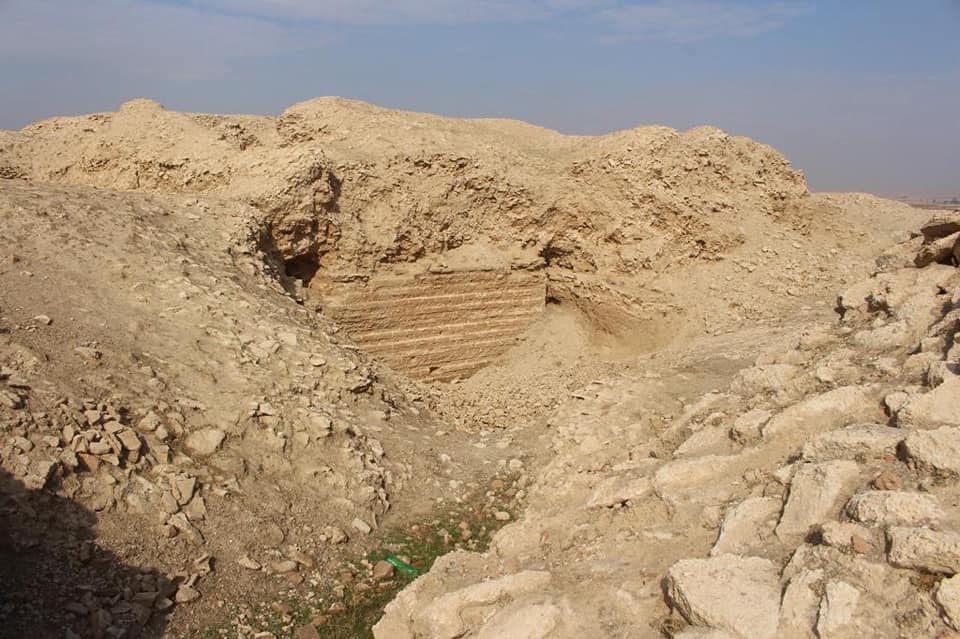
In a recent announcement by Mr. Ali Obaid Shalgham of the Iraqi State Board of Antiquities and Heritage (SBAH), archaeologists have uncovered remains of the old city of Jalula.
Historical records tell us that Jalula was situated on the (Great) Khurasan Road, becoming the heart of the Šāḏ Qobāḏ Province during the time of the Sassanid Empire.
It’s important to note that this ancient Jalula is different from the modern one, established in 1958 near Bahiza. The city played a vital role as a trading hub and held strategic importance as a key passage to Northern Iraq.
Ahmed Abdul Jabbar Khamas led a recent survey, successfully pinpointing landmarks and structures of the ancient city. This led to on-site inspections that officially confirmed the existence of these structures.
Mr Shalgham said, “Archaeological survey operations are ongoing and also contributed to the discovery and recording of a number of archaeological sites and settlements from the history of the country.”
The Battle of Jalula
In the year 637 AD, a significant event unfolded in the Battle of Jalula, a clash between the Sasanian Empire and the Rashidun Caliphate.
The Caliph saw Jalula as a hurdle in advancing towards Tikrit and Mosul, prompting the appointment of Hashim ibn Utba to lead 12,000 troops in an assault on the city, according to Heritage Daily.
The battle started with a direct assault by the Muslim forces. After some time of engagement, they pretended to withdraw, retreating in an organized manner.
Sensing an opportunity, Mihran, the Persian commander, ordered the bridging of entrenchments. Once the Persian army was in battle formation, a general attack was launched as planned.
Archaeologists uncover ancient Jalula's boundaries and structures, site of the historic Battle of Jalula 1386 years ago! 🏛️
Led by Prof. Ali Obeid Shalgham and researcher Ahmed Abdul Jabbar Khamas, the Iraqi State Board of Antiquities and Heritage reveals the city's strategic… pic.twitter.com/eDZTtR9eOW
— LitFXMogul 🇪🇸 (@LitFXMogul) November 23, 2023
Things went according to both commanders’ strategies until Mihran committed his troops to an open battlefield. At this point, Hashim executed his plan. He sent a strong cavalry unit led by Qaqa ibn Amr to seize the bridge over the entrenchments.
Since most Persian forces were focused on attacking the main Muslim body, the bridge was not heavily guarded. Qaqa skillfully maneuvered around the Persian right flank and swiftly captured the bridge from behind.
The news of a powerful Muslim cavalry group behind them shook the Persian morale. Hashim initiated a frontal attack with Muslim infantry, while Qaqa, with his cavalry, struck at the Persian rear.
The Persian troops found themselves trapped between the Muslim army and the natural obstacles on the battlefield. Despite this, thousands managed to escape, reaching the safety of the Jalula fortress.
Victory to the Muslim forces
The Persians faced substantial losses, leading to a decisive victory for the Muslim forces. Despite being the last ruler of the Sasanian Empire, Yazdegerd III chose not to send reinforcements to aid the city’s defense. Consequently, after a 7-month siege, Jalula fell.
Following this victory, the Caliph’s forces advanced on Tikrit and Mosul, marking a crucial step in the conquest of Persia and the eventual collapse of the Sassanid Empire, according to Heritage Daily.
See all the latest news from Greece and the world at Greekreporter.com. Contact our newsroom to report an update or send your story, photos and videos. Follow GR on Google News and subscribe here to our daily email!



